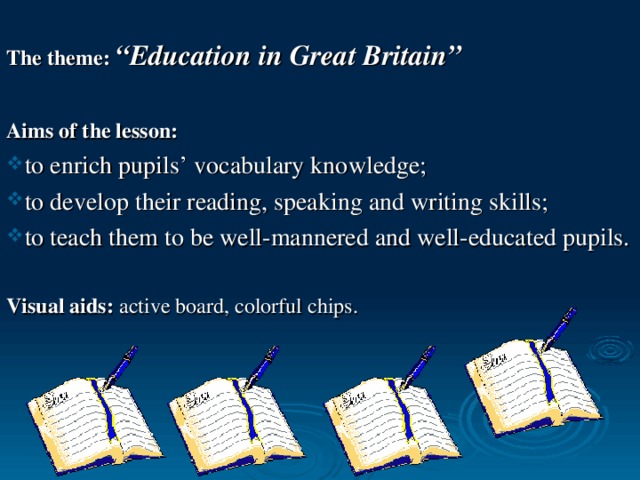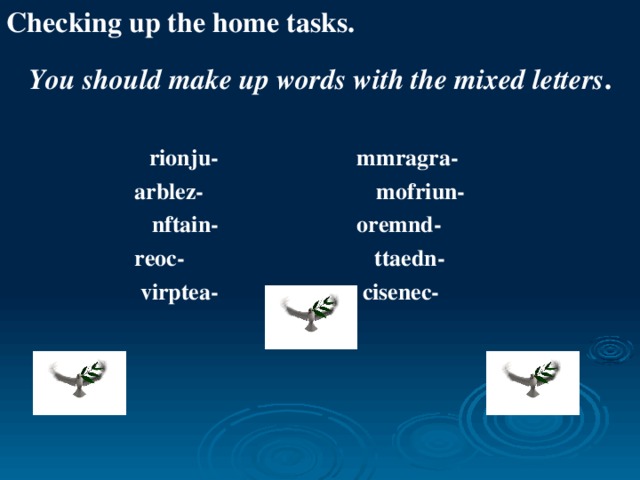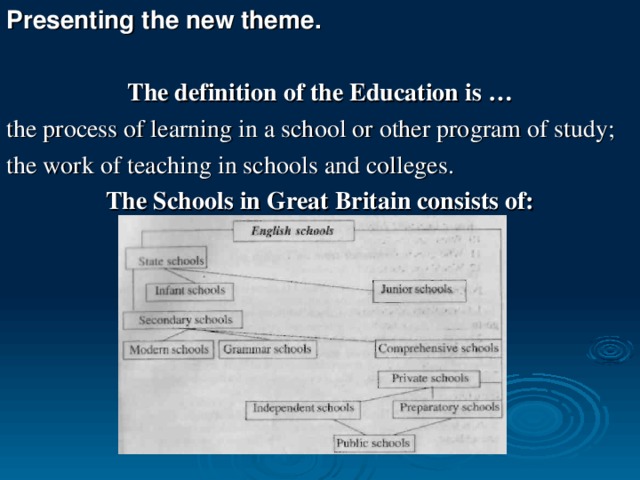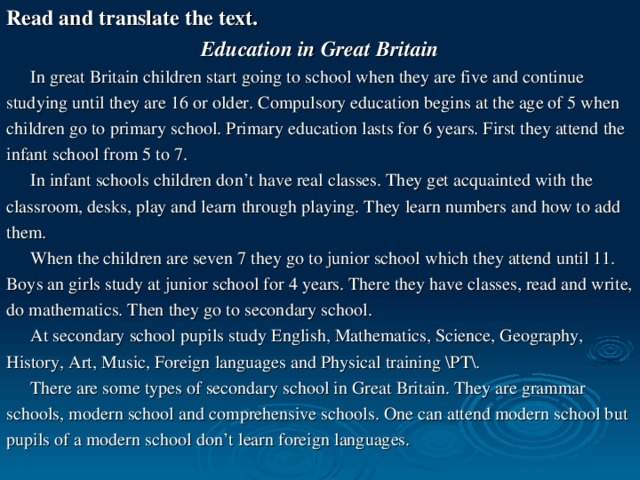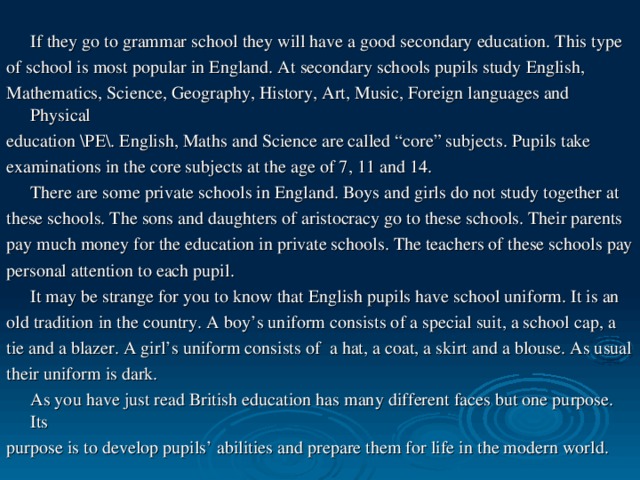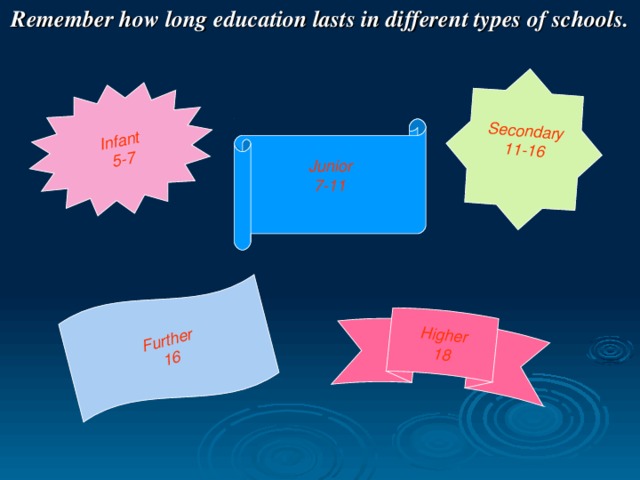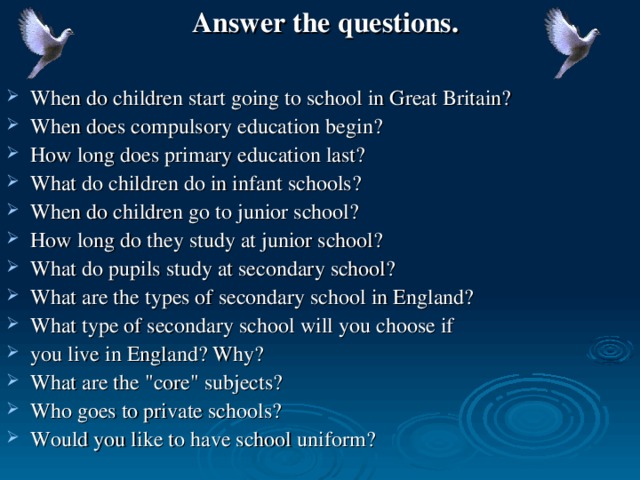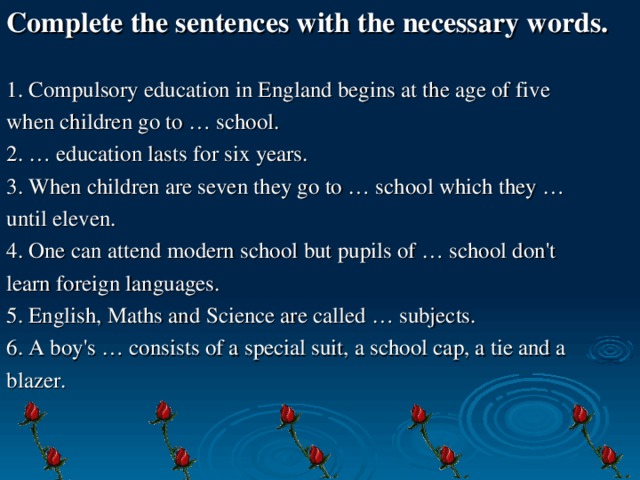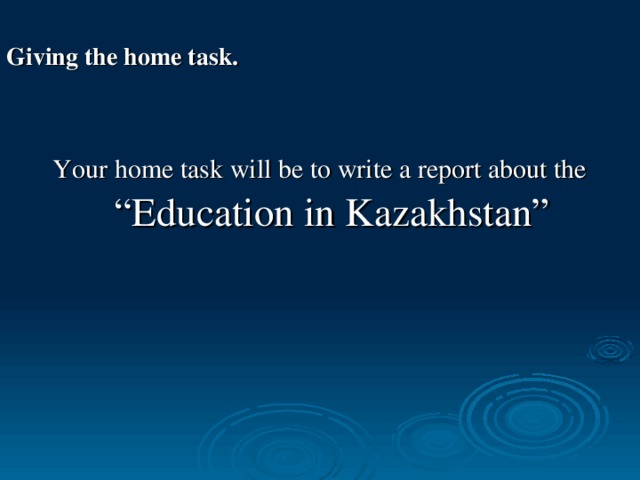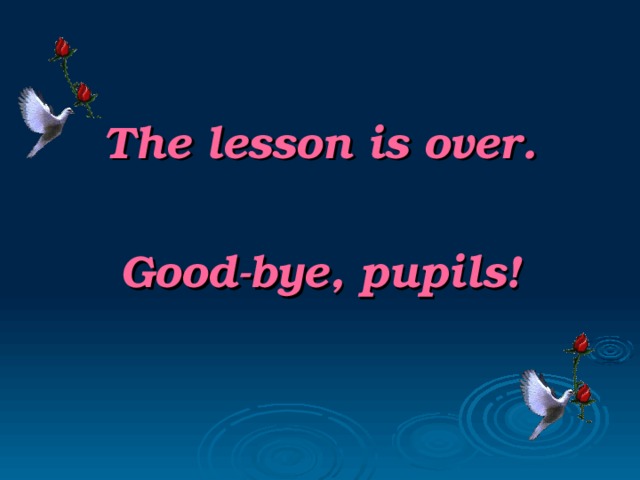these theme of the lesson is about the education in Great Britain. education is very important thing in all countries. education gives the knowledge. Without knowledge all human beings can not live. It shows our development. I wish you to have good knowledge. knowledhe knowlede knowledge be educated person be educated person
Создайте Ваш сайт учителя Видеоуроки Олимпиады Вебинары для учителей
Education in Great Britain \power point\
Вы уже знаете о суперспособностях современного учителя?
Тратить минимум сил на подготовку и проведение уроков.
Быстро и объективно проверять знания учащихся.
Сделать изучение нового материала максимально понятным.
Избавить себя от подбора заданий и их проверки после уроков.
Наладить дисциплину на своих уроках.
Получить возможность работать творчески.
Просмотр содержимого документа
«Education in Great Britain \power point\»
Полезное для учителя
Распродажа видеоуроков!
1860 руб.
2660 руб.
1970 руб.
2820 руб.
1880 руб.
2690 руб.
1940 руб.
2770 руб.
ПОЛУЧИТЕ СВИДЕТЕЛЬСТВО МГНОВЕННО
* Свидетельство о публикации выдается БЕСПЛАТНО, СРАЗУ же после добавления Вами Вашей работы на сайт
Удобный поиск материалов для учителей
Проверка свидетельства
